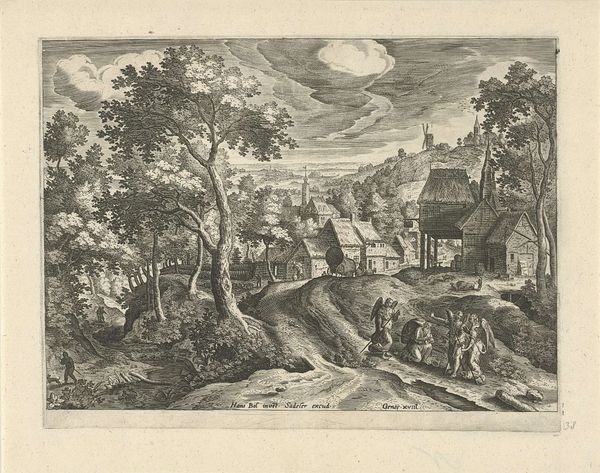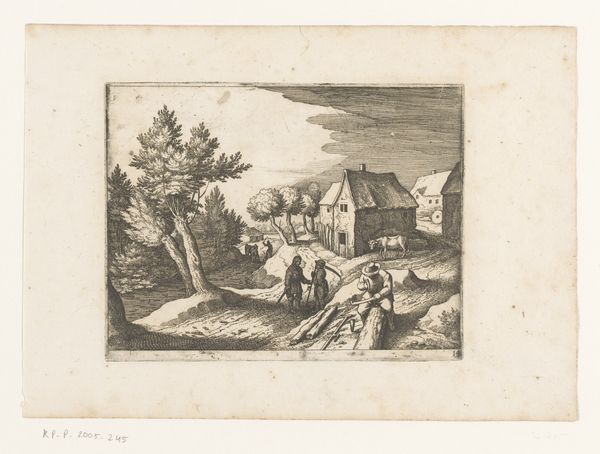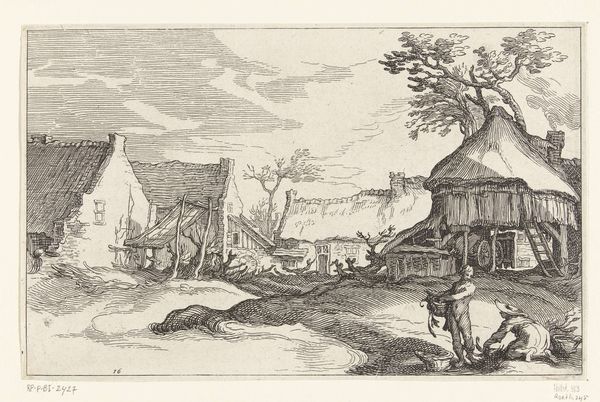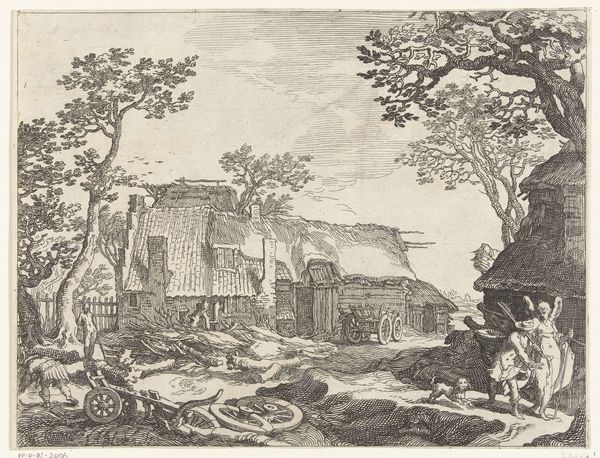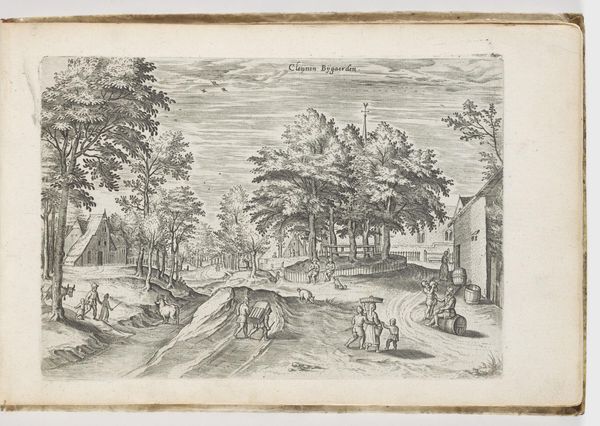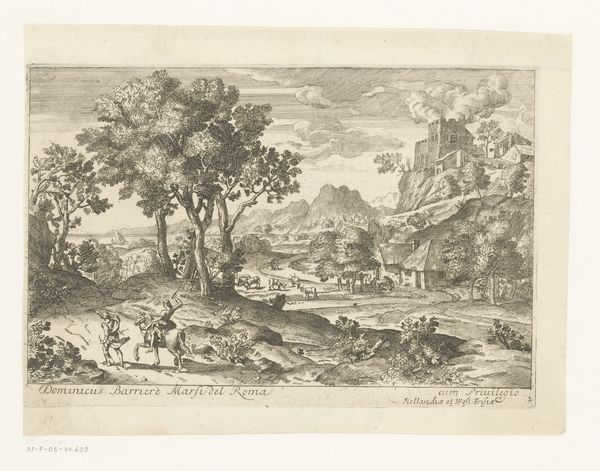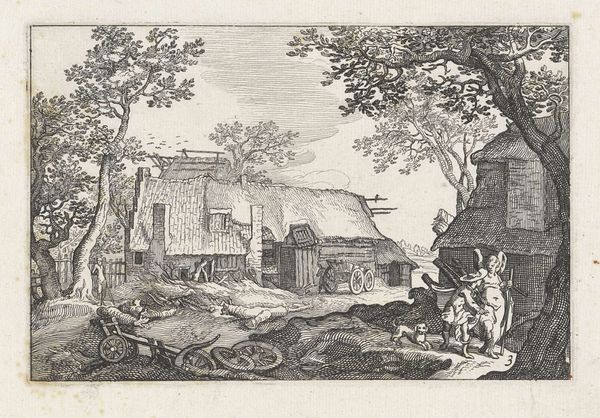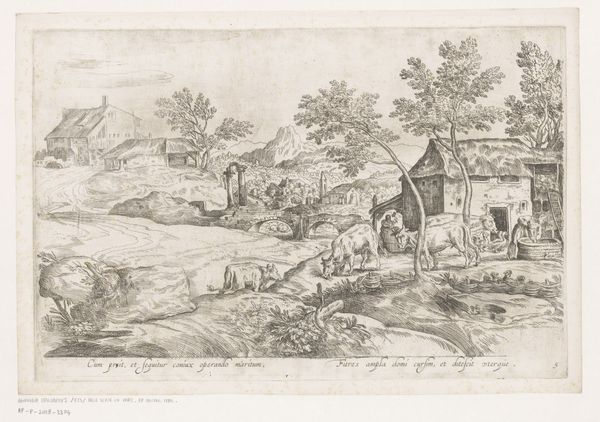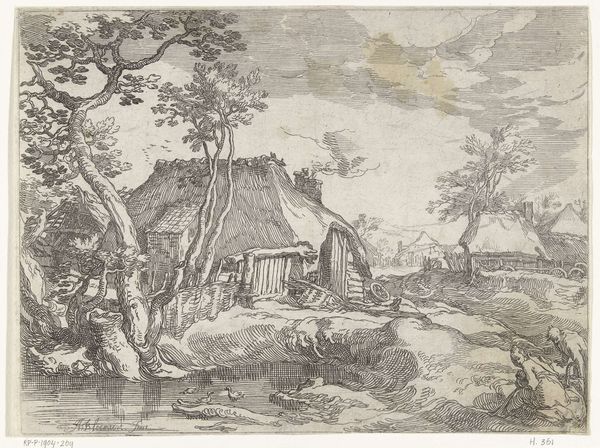
etching, engraving
#
etching
#
old engraving style
#
landscape
#
etching
#
mannerism
#
history-painting
#
engraving
Dimensions: height 124 mm, width 173 mm
Copyright: Rijks Museum: Open Domain
Curator: Up next we have "Juli: schapen scheren (leeuw)", or "July: Shearing Sheep (Lion)," an engraving and etching created by Antonio Tempesta sometime between 1575 and 1630. Editor: It feels… quaint. All that intricate cross-hatching really flattens the perspective, creating a tapestry-like effect. The landscape itself, however, offers a gentle contrast between open and enclosed areas. Curator: I find Tempesta's choice of July as a subject fascinating, especially considering the sociopolitical backdrop of the late 16th century. He highlights the rural, agricultural labour inherent in the passage of time, but inserts this rather overt, heraldic lion in the upper portion of the scene... Editor: True, its prominence draws your eye immediately. Its presence high above the human action adds an odd symbolic layer—perhaps something about hidden forces acting on our quotidian reality? Curator: Precisely! I think it speaks to larger narratives of power, class, and the way in which everyday tasks like shearing sheep are invariably framed by broader historical contexts. The sheep themselves have no agency here. They are at the behest of multiple invisible and very visible forces. Editor: While I certainly don’t disagree with that analysis, the composition intrigues me in other ways too. See how the artist used linear perspective? The careful placement of the architectural structures guides our gaze diagonally back into the landscape. It lends a harmonious sense of visual balance despite the stark foreground/background divide. Curator: Interesting. And I'm especially curious about that figure who’s slumbering or reclined against the building at the composition's right, seemingly oblivious to the manual labor surrounding him and perhaps even the large carnivore hovering above... Editor: Ultimately, regardless of Tempesta's initial intent, it's the enduring contrast of form and narrative, the pastoral scene with its hovering lion, that renders this engraving so enduring. Curator: Indeed, "Juli: schapen scheren (leeuw)" becomes more than a representation of rural life. It poses potent questions about labor, control, and the way power reverberates through every aspect of society.
Comments
No comments
Be the first to comment and join the conversation on the ultimate creative platform.

